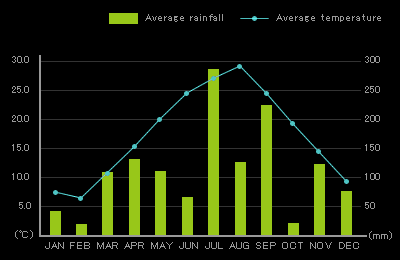I C A C 2013
2013 International Conference
on Advanced Capacitors
May 27 - 30, 2013
Please click "HOME" or upgrade your browser if you cannot see any contents.
About OSAKA
Osaka is located on the main island of Honshu, roughly in the center of Japan.Osaka represents 18.9% of Japan's gross domestic product, the second largest in Japan. The scale of Osaka City's economy alone exceeds that of Hong Kong and Thailand.
Historical Overview
1400 Years of Tradition
Since ancient times, Osaka has been a gathering place. Located at the confluence of a vast web of busy river and sea routes, it naturally grew into a flourishing economic center and became the gateway to Japan for travelers and traders from all over Asia. It was here that Japan first met the world.
01

Osaka's Origins Go Back to the 5th Century
That was when it began to flourish as the political and economic center of Japan. Naniwazu Port, the predecessor to the modern port of Osaka, became a gateway into ancient Japan for visitors from Korea, China and the Asian continent. These visitors brought with them knowledge and artifacts of advanced culture, and new technologies in ceramics, forging, construction, and engineering. They also brought with them a new religion, Buddhism, which very quickly began to spread to the rest of the country.
Hideyoshi's Castle Town
Hideyoshi Toyotomi, a famous warlord, unified Japan from his base in Osaka and built Osaka Castle in 1583 during the Azuchi and Momoyama Periods (1574-1600). Rivers were excavated to expand Osaka's capabilities as a base for marine transportation. However, in battles that raged between the winter of 1614 and the summer of 1615 the castle town of Osaka was burnt to the ground.
An Economic & Cultural Hub
As Japan entered the Edo Period (1601-1867), when the political capital was moved north to Edo (present-day Tokyo) and the country was completely isolated from the rest of the world, Osaka was restored from the ashes of civil war and quickly grew into a thriving economic hub. It became known as "Japan's kitchen," because essential goods including rice, the staple food of the East, were sent to Osaka from all over Japan for shipment to other parts of the country, and also to international destinations.
02
Climate & Dress
A moderate climate with strong seasonal variationm
Located at a latitude of 34 degrees, Osaka has a relatively mild climate with four distinct seasons. The average daily temperature, which varies from 6 degrees Celsius (42 F) in the winter to 28 degrees Celsius (86 F) in the summer, is 61.3 F. Average precipitation (1,318 mm) peaks during the rainy season, which is usually between late June and late July, and in September during typhoon season.
Dress
Spring (March - May) :
light jackets, light sweaters and other similar kinds of tops.
Summer (June - August) :
light clothes (cardigans and other similar kinds are handy, since indoors are mostly air-conditioned.)
Autumn (September - November) :
light jackets, light sweaters and other similar kinds of tops.
Winter (December - February) :
overcoats, sweaters, etc.

03
More Information
OSAKA TOURIST GUIDE
Please check the useful website "OSAKA-INFO" produced by Osaka Convention & Tourism Bureau.